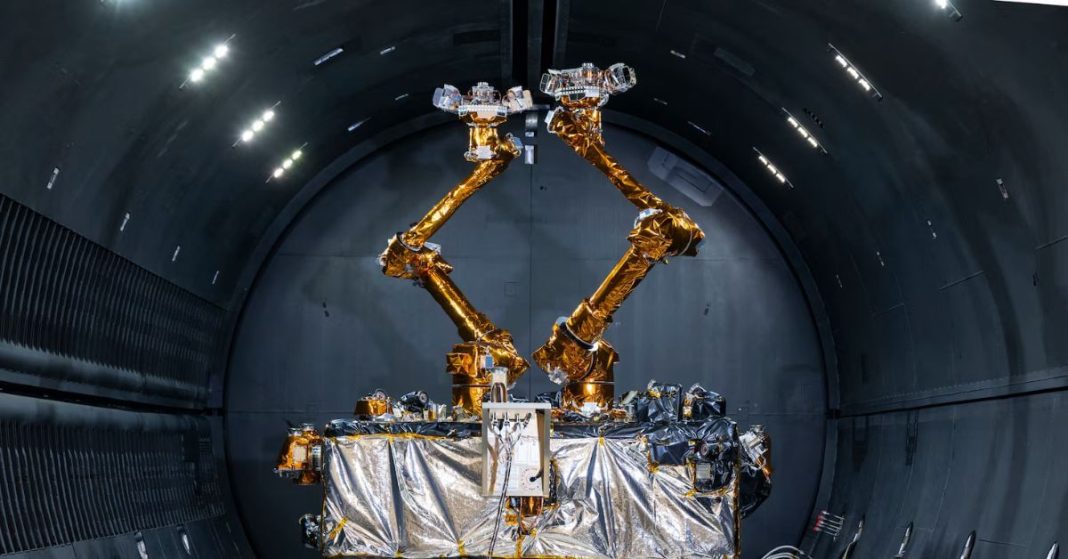U.S. Navy Develops Revolutionary Robotic System for Satellite Repair and Upgrades in Space

The U.S. Naval Research Laboratory (NRL) and the Defense Advanced Research Projects Agency (DARPA) have unveiled a groundbreaking robotic system designed to enhance the operational capabilities of satellites in space. This innovative technology, known as the Robotic Servicing of Geosynchronous Satellites (RSGS) Integrated Robotic Payload (IRP), stands to revolutionize how satellites are managed and maintained in orbit.
Following its development, the integrated robotic system has been handed over to Northrop Grumman’s SpaceLogistics, a key commercial partner of DARPA, for incorporation into their Mission Robotics Vehicle (MRV). The planned deployment of the RSGS system is set for 2026, marking a significant milestone in satellite technology.
Before its delivery, the RSGS Robotic System underwent rigorous thermal vacuum testing to ensure that it can endure the extreme conditions of space. Engineers subjected the system’s avionics, cameras, robotic arms, and communication systems to simulated on-orbit environments, validating the robotic servicing capabilities that will be essential for operations in geosynchronous orbit, located approximately 22,000 miles above the Earth.
NRL researchers believe that this technology holds transformative potential for both national security and commercial space operations. Traditionally, satellites have been over-engineered with redundant systems and excess fuel as a precaution against their inability to be serviced after launch. The advent of the RSGS program introduces a paradigm shift by enabling real-time hardware upgrades and orbital modifications, significantly enhancing the efficiency and cost-effectiveness of space missions.
Dr. Bruce Danly, NRL’s Director of Research, emphasized the broad implications of this technology, noting that it could dramatically change the landscape for satellite operators, allowing for direct maintenance and improvements instead of relying solely on pre-launch measures and designs.
According to William Vincent, the program manager, completing the testing and delivery of the IRP represents a notable achievement after nearly a decade of research and development. He likened the successful shipment of the integrated payload to sending a child off to college, underscoring the level of care and anticipation that has gone into this project.
Once the IRP is launched aboard Northrop Grumman’s MRV, it will undergo final calibration before commencing its servicing missions. The advanced robotic system, which incorporates state-of-the-art controls and hardware, is set to perform precise servicing operations that will benefit a wide array of sectors, ranging from military applications to commercial communications.
The successful integration of such technology marks an exciting step forward in the future of satellite maintenance, promising to extend the operational life and capabilities of these critical assets in the ever-evolving realm of space exploration and utilization.

















Add Comment